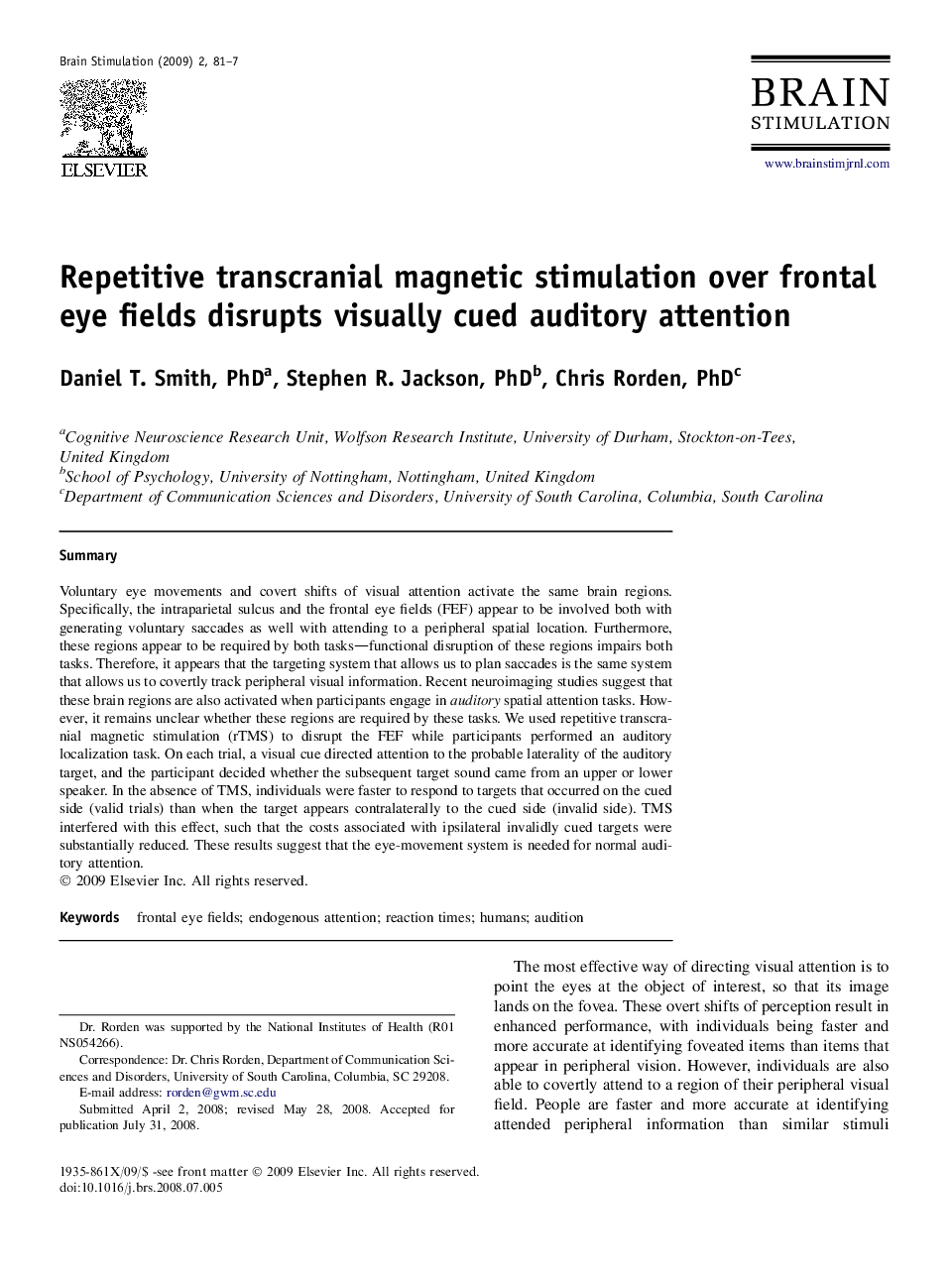| کد مقاله | کد نشریه | سال انتشار | مقاله انگلیسی | نسخه تمام متن |
|---|---|---|---|---|
| 3039245 | 1184695 | 2009 | 7 صفحه PDF | دانلود رایگان |

SummaryVoluntary eye movements and covert shifts of visual attention activate the same brain regions. Specifically, the intraparietal sulcus and the frontal eye fields (FEF) appear to be involved both with generating voluntary saccades as well with attending to a peripheral spatial location. Furthermore, these regions appear to be required by both tasks—functional disruption of these regions impairs both tasks. Therefore, it appears that the targeting system that allows us to plan saccades is the same system that allows us to covertly track peripheral visual information. Recent neuroimaging studies suggest that these brain regions are also activated when participants engage in auditory spatial attention tasks. However, it remains unclear whether these regions are required by these tasks. We used repetitive transcranial magnetic stimulation (rTMS) to disrupt the FEF while participants performed an auditory localization task. On each trial, a visual cue directed attention to the probable laterality of the auditory target, and the participant decided whether the subsequent target sound came from an upper or lower speaker. In the absence of TMS, individuals were faster to respond to targets that occurred on the cued side (valid trials) than when the target appears contralaterally to the cued side (invalid side). TMS interfered with this effect, such that the costs associated with ipsilateral invalidly cued targets were substantially reduced. These results suggest that the eye-movement system is needed for normal auditory attention.
Journal: Brain Stimulation - Volume 2, Issue 2, April 2009, Pages 81–87